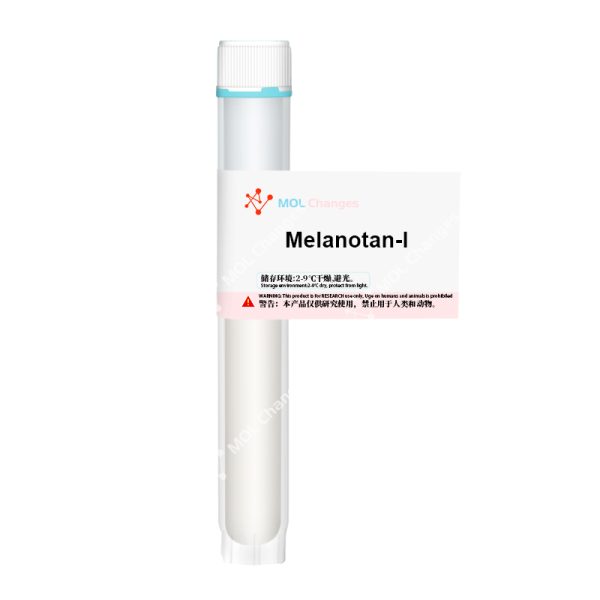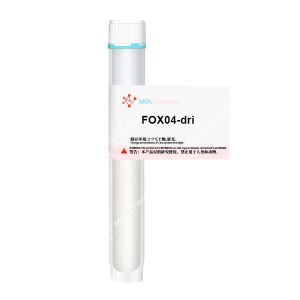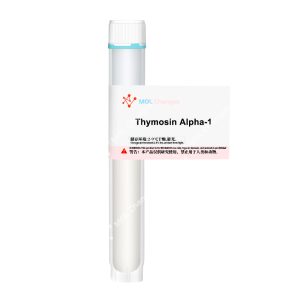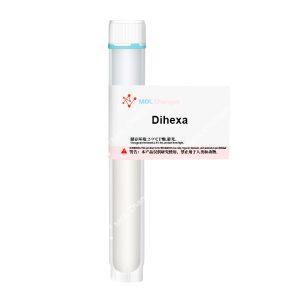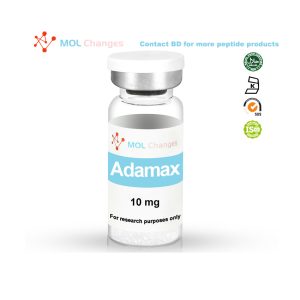Melanotan-I (MT-I), or more precisely [Nle4,D-Phe7]-α-MSH, is an analog of α-MSH (melanocyte-stimulating hormone). A linear tridecapeptide, it promotes melanin formation through selective activation of the MC1R (melanocortin-1 receptor).
Experimental evidence supports its relatively non-toxic and non-carcinogenic profile, both in vivo and in various in vitro models. Compared to natural α-MSH, Melanotan-I possesses a significantly prolonged half-life; it has been successfully marketed in the European Union.
Sequence
Ac-Ser-Tyr-Ser-Nle-Glu-His-D-Phe-Arg-Trp-Gly-Lys-Pro-Val-NH₂
CAS Number
75921-69-6
Molecular Formula
C78H111N21O19
Molecular Weight
1646.85
Research Of Melanotan-I
The melanocortin system is composed of five different receptors (MC1-R through MC5-R), the aforementioned melanocortin peptides (Proopiomelanocortin/POMC derived peptides), and two endogenous antagonists.
Melanotan-I selectively binds to and activates the primary receptor, MC1R. The core sequence (His-Phe-Arg-Trp) is responsible for this specific interaction.
Receptor activation leads to intracellular cyclic adenosine monophosphate (cAMP) and all subsequent PKA-dependent pathways; melanin-synthesizing enzymes (tyrosinase being the prime example) are ultimately increased in activity.
Increased eumelanin production within the skin results in enhanced pigmentation – a partial but valuable barrier against ultraviolet and visible light penetration. Scavenging of UV-induced reactive oxygen species (DNA, protein, and lipid damage) is also believed to be mediated by eumelanin.
Melanotan-I exerted the greatest protective effect on increasing this specific protective eumelanin. A double blind trial measured various parameters of photoprotection; low sunburn prone subjects received 3 cycles of subcutaneous injections.
Skin melanin density increased as previously mentioned, and most epidermal sunburn cells were reduced. Photoprotection, at least to a significant degree, is an important end goal of human skin exposure to UVR.
Melanotan-I induces skin pigmentation in EPP(Erythropoietic Protoporphyria) patients, reducing photosensitivity and subsequently alleviating the associated skin pain.⁵ EPP itself is a rare genetic disorder; the accumulation of a photosensitizer, protoporphyrin IX, causes this sensitivity to visible light.
An open-label study spanning over 4 months was conducted on five EPP subjects; subcutaneous Melanotan-I implants were administered at Day 7 and Week 8. Compared to baseline, increases in skin melanin density were measured, along with significantly improved tolerance to light stimulation – the specific metric used being the ‘time to reach intolerable pain’ under illumination.
The U.S. Food and Drug Administration (FDA) approved Scenesse (afamelanotide), the current form of Melanotan-I implant, for this very purpose.
Preclinical studies have demonstrated relatively low toxicity (no observed carcinogenicity as demonstrated in both in vitro and all tested in vivo models.
Effective induction of significant skin pigmentation is one of the more well documented effects of Melanotan-I; poor photoresponsive skin types (near complete tanning failure being the end point) benefit greatly from it.
The reduction of the skin’s toxic response to ultraviolet radiation is the true, desired end result of all of this – sunburn and related damage are reduced, at least partially, by Melanotan-I.
COA
HPLC
MS




